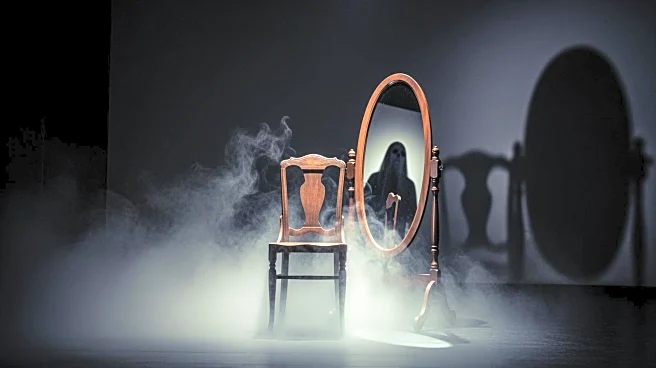What's Happening?
The Harvard Crimson has launched its first-ever cryptic crossword, aiming to engage readers with a challenging and entertaining puzzle format. Cryptic crosswords differ from traditional crosswords by incorporating both definitional and wordplay clues,
making them more complex. The puzzle requires solvers to decipher clues that often appear as normal sentences but contain hidden components such as definitions, fodder, and indicators. These indicators suggest the type of wordplay needed to solve the clue, such as anagrams or reversals. The introduction of this cryptic crossword is part of the publication's effort to offer diverse content and engage its audience in new ways.
Why It's Important?
The introduction of cryptic crosswords by The Harvard Crimson represents a shift towards more interactive and intellectually stimulating content. This move could attract a broader audience, including those who enjoy puzzles and mental challenges. It also reflects a trend in media to diversify offerings to maintain reader interest and engagement. By providing such content, The Harvard Crimson not only enhances its appeal but also encourages critical thinking and problem-solving skills among its readers. This initiative may inspire other publications to explore similar formats, potentially leading to a wider adoption of cryptic crosswords in the U.S. media landscape.
What's Next?
As The Harvard Crimson continues to offer cryptic crosswords, it may assess reader feedback to refine and expand its puzzle offerings. The success of this initiative could lead to regular features or themed puzzles that cater to different interests and skill levels. Additionally, the publication might explore collaborations with puzzle creators or host competitions to further engage its audience. The response from readers will likely influence future decisions regarding the frequency and complexity of these puzzles, potentially setting a precedent for other media outlets to follow.
Beyond the Headlines
The introduction of cryptic crosswords could have broader implications for educational institutions and media outlets. It highlights the importance of fostering critical thinking and problem-solving skills, which are valuable in academic and professional settings. This initiative may encourage educators to incorporate similar puzzles into curricula to enhance cognitive skills. Furthermore, it underscores the evolving nature of media consumption, where interactive and engaging content is increasingly sought after. As media outlets adapt to changing reader preferences, cryptic crosswords could become a staple in publications seeking to offer intellectually stimulating content.













